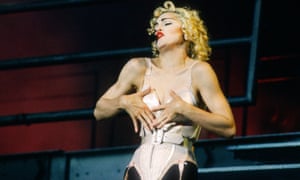She’s an enduring global superstar, with 330m albums sold worldwide. And she has just begun the US leg of her first greatest hits tour, celebrating 40 years in the industry. It’s hard to think of anyone who is as overexposed as Madonna – but, says her biographer Mary Gabriel, fundamental misconceptions about her remain.
Critics accuse her of being a cultural vampire, insisting it is ambition, not talent, that has powered her career. Instead, Gabriel argues, to really understand Madonna’s career you need to understand the New York club scene that fostered her talent. From Andy Warhol to the Beastie Boys and Jean-Michel Basquiat, it was a community that was intent on breaking taboos and boundaries, and the Material Girl, she believes, has never lost that sensibility.
From Aids activism to taking control of all aspects of her music and work, Madonna changed the mould of what a female popstar was allowed to be, Gabriel argues,. And Madonna’s celebration of female sexuality was radical – and has been polarising critics for generations.
Lifelong Madonna fan Nosheen Iqbal gets a tour, thanks to Jessie Rifkin, of the site of the New York club where Madonna transformed herself from the coat check girl to star performer (and where LL Cool J was a bouncer, and Sade is reputed to have worked behind the bar). And she hears from Donna De Lory, who worked as a backing singer for Madonna for 20 years, about what it was like to work with her at the height of her fame.
Photograph: Gie Knaeps/Getty Images
Support The Guardian
The Guardian is editorially independent.
And we want to keep our journalism open and accessible to all.
But we increasingly need our readers to fund our work.

